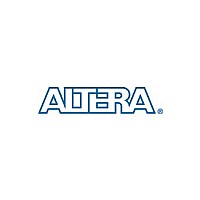EPM570 Altera, EPM570 Datasheet - Page 15

EPM570
Manufacturer Part Number
EPM570
Description
MAX II Device Family
Manufacturer
Altera
Datasheet
1.EPM570.pdf
(92 pages)
Available stocks
Company
Part Number
Manufacturer
Quantity
Price
Company:
Part Number:
EPM570F-256C5N
Manufacturer:
ALTERA
Quantity:
462
Company:
Part Number:
EPM570F100C4N
Manufacturer:
ALTERA
Quantity:
12 388
Company:
Part Number:
EPM570F100C4N
Manufacturer:
ALTERA
Quantity:
325
Part Number:
EPM570F100C4N
Manufacturer:
ALTERA/阿尔特拉
Quantity:
20 000
Company:
Part Number:
EPM570F100C5N
Manufacturer:
NICHIA
Quantity:
1 001
Company:
Part Number:
EPM570F100C5N
Manufacturer:
ALTERA
Quantity:
490
Part Number:
EPM570F100C5N
Manufacturer:
ALTERA/阿尔特拉
Quantity:
20 000
Altera Corporation
December 2004
the LUT of the same LE so that the register is packed with its own fan-out
LUT. This provides another mechanism for improved fitting. The LE can
also drive out registered and unregistered versions of the LUT output.
LUT Chain & Register Chain
In addition to the three general routing outputs, the LEs within an LAB
have LUT chain and register chain outputs. LUT chain connections allow
LUTs within the same LAB to cascade together for wide input functions.
Register chain outputs allow registers within the same LAB to cascade
together. The register chain output allows an LAB to use LUTs for a single
combinational function and the registers to be used for an unrelated shift
register implementation. These resources speed up connections between
LABs while saving local interconnect resources. See
Interconnect” on page 2–15
register chain connections.
addnsub Signal
The LE’s dynamic adder/subtractor feature saves logic resources by
using one set of LEs to implement both an adder and a subtractor. This
feature is controlled by the LAB-wide control signal addnsub. The
addnsub signal sets the LAB to perform either A + B or A – B. The LUT
computes addition; subtraction is computed by adding the two’s
complement of the intended subtractor. The LAB-wide signal converts to
two’s complement by inverting the B bits within the LAB and setting
carry-in to 1, which adds one to the least significant bit (LSB). The LSB of
an adder/subtractor must be placed in the first LE of the LAB, where the
LAB-wide addnsub signal automatically sets the carry-in to 1. The
Quartus II Compiler automatically places and uses the adder/subtractor
feature when using adder/subtractor parameterized functions.
LE Operating Modes
The MAX II LE can operate in one of the following modes:
■
■
Each mode uses LE resources differently. In each mode, eight available
inputs to the LE, the four data inputs from the LAB local interconnect,
carry-in0 and carry-in1 from the previous LE, the LAB carry-in
from the previous carry-chain LAB, and the register chain connection are
directed to different destinations to implement the desired logic function.
LAB-wide signals provide clock, asynchronous clear, asynchronous
Normal mode
Dynamic arithmetic mode
Core Version a.b.c variable
for more information on LUT chain and
MAX II Device Handbook, Volume 1
“MultiTrack
MAX II Architecture
2–9














